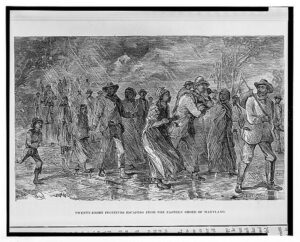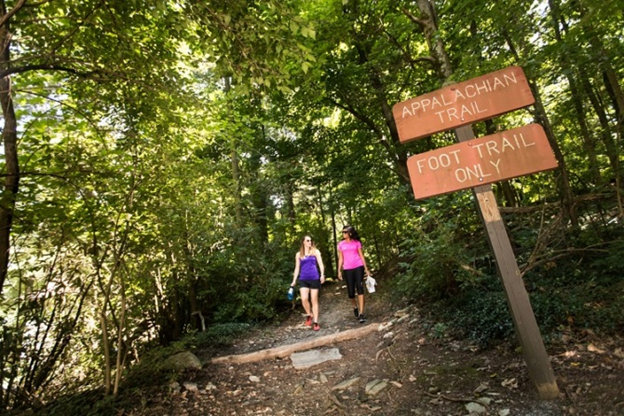The 2,190-mile-long Appalachian Trail (AT) passes through 14 states, including Maryland. The trail runs along the Appalachian Mountains from the southern terminus at Springer Mountain in Georgia to the northern terminus at Maine’s Mount Katahdin. While the 41 miles of the AT that pass through Maryland along the backbone of South Mountain have never been directly linked to the historical route of the Underground Railroad, there was known activity in the area, especially with its proximity to the Mason-Dixon line.
It’s impossible to know most of the paths freedom seekers took on the Underground Railroad because of the lack of physical evidence. The level of secrecy surrounding specifics of the routes was necessary for safety. The Appalachian Trail itself wasn’t even constructed until the 1920s and 1930s, but the border between Frederick and Washington Counties has just the kind of forested, mountain terrain that holds an abundance of hiding spots. This rugged terrain would have been an ideal location for freedom seekers escaping to the North.
 Harriet Tubman is well known for her work as a conductor on the Underground Railroad. She helped some 70 enslaved people escape to freedom, utilizing a network of secret routes and safe houses to help them get north of the Mason-Dixon line. Tubman, however, is not as widely known for her naturalist capabilities, which were invaluable in her work on the Underground Railroad.
Harriet Tubman is well known for her work as a conductor on the Underground Railroad. She helped some 70 enslaved people escape to freedom, utilizing a network of secret routes and safe houses to help them get north of the Mason-Dixon line. Tubman, however, is not as widely known for her naturalist capabilities, which were invaluable in her work on the Underground Railroad.
Tubman was born into slavery around 1822 on a plantation in Dorchester County, Maryland. She spent her early days in the wetlands, swamps and upland forests of Maryland’s Eastern Shore where she first became acquainted with the natural world. Tubman took notice of flowers, trees, animals and stars. She even learned about foraging, herbal medicine and healing. Later on, her knowledge of the waterways, wind patterns, geography, forestry and astronomy benefited her greatly.
During her 13 trips back into Maryland to help others escape to freedom, Tubman used the call of a barred owl to send alerts. It was a sound that blended in with nature, yet she could use it to communicate without causing alarm. Like other freedom seekers, she also relied on the night sky, using the North Star and the Big Dipper to guide her. Her working knowledge of the natural world was invaluable on the Underground Railroad.
If you’ve ever ventured off trail on the Appalachian Trail or found yourself bushwacking to get around a fallen tree, you may have just an inkling of the terrain Tubman and her followers faced while trying to safely reach the Mason-Dixon Line. There certainly wasn’t a well worn trail with white blazes, shelters and documented water sources along the way, let alone a guidebook or smartphone app. Those trying to safely reach the north faced a multitude of challenges.
Ironically, communities of color have been underrepresented in the outdoor recreation space in modern times. Organizations like Outdoor Afro are working hard to change that. The non-profit leads the way for inclusion in outdoor recreation, nature and conservation for all. In fact, Outdoor Afro has led backpacking excursions along Maryland’s 41 miles of the Appalachian Trail, in an attempt to retrace a historical route of the Underground Railroad and honor the legacy of Harriet Tubman.
Perhaps the next time you lace up your hiking boots and head out on the Appalachian Trail for a hike, you’ll think of those who traversed the ridgeline of South Mountain before there was even a trail in place. Remember how their keen sense of the natural world helped lead them to freedom. Try connecting with nature and see where it leads you.
(Images: Title image by Justin Tsucalas, courtesy of Visit Frederick. Illustration in body text, “Fugitives escaping from the eastern shore of Maryland.” Library of Congress Prints and Photographs Division.)

